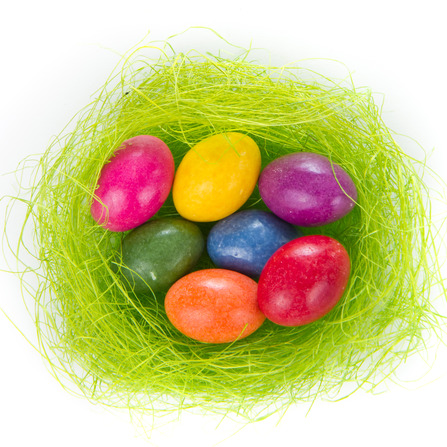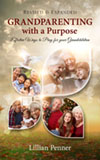

Easter traditions are a lot of fun to do with our grandchildren but let’s not forget to teach them the true meaning of Easter. Here are some traditions I found on the IMOM website.
We all love to celebrate Easter with our children. There’s nothing cuter than new spring outfits, colorful eggs, and fuzzy bunnies, right? But it’s important to keep our children aware of the real meaning of Easter: the resurrection of Jesus Christ, which is the cornerstone event in Christian history.
We’ve put together a guide to help you connect the dots between our favorite Easter traditions and their greater significance. Use it to make this year’s celebration the best ever!
What do eggs have to do with Easter? This is one of those traditions with origins both secular and religious. Before the time of Christ, eggs were used as symbols of new life and fertility and were often incorporated into springtime celebrations such as the vernal equinox (the first day of spring). Early Christians adopted this practice to symbolize the new life that Christ’s resurrection represented both for Him and all who believe. The decorating of eggs with colorful dyes also dates back to ancient history. Orthodox Christians in Eastern Europe have dyed eggs red for centuries to signify the blood of Christ, which was shed on Good Friday.
What do bunnies have to do with Easter? The bunnies we see everywhere as Easter approaches also have duel origins in history. They were heralded as symbols of fertility and new life prior to the advent of Christianity. The connection between the bunny and the Christian celebration of Easter originates in a German tradition, which is first mentioned in writings in the 1500s. German children looked forward to a visit from the “Easter Hare” on the evening before Easter, leaving little nests to receive the colorful eggs he would leave. This tradition was introduced to America by German immigrants who arrived in Pennsylvania Dutch Country in the 1700s.
Why do people get new clothes for Easter? Early Christians sometimes wore the same clothes throughout Lent, the weeks leading up to Easter. This was another exercise in self-denial and spiritual discipline used to help the Christian focus on the suffering and sacrifice of Christ. The period of abstaining from changing clothing ended on Easter day, when the worshippers would don new apparel for the resurrection celebration. In modern America, the tradition of the new Easter outfit has a very practical origin, as well. For many poor, rural families, each child would have only one “Sunday” dress or outfit. The child’s summer or warm weather Sunday dress would often be worn for the first time on Easter Sunday, as the weather turned warm.
What do lambs have to do with Easter? We often see depictions of lambs on Easter-themed items; this also has origins in the Christian tradition. The bible often refers to Christ at the “Lamb of God.” The Jewish tradition required the sacrifice of lambs for the forgiveness of sins. Scripture explains that Christ’s death on the cross, which made forgiveness of sins and a relationship with God possible for all who trust in Christ, made him the ultimate sacrificial lamb. In addition, spring is the season in which female sheep give birth, making adorable, wooly lambs a springtime fixture in the country.
Why do we eat chocolate bunnies at Easter? This is another tradition that we probably owe to our German ancestors. They made the first edible Easter bunnies in the 1800s using pastry and sugar. From that tasty beginning, it was a short leap to chocolate versions, which have remained popular in modern times.
What do chicks have to do with Easter? These cute little balls of yellow fuzz are a sideline to the egg tradition, symbolizing new life and a fresh start.
If you want to help your children understand the greater significance of Easter, check out iMOM’s new Easter Game and Puzzle; it makes sharing the Easter story with little ones memorable and fun.
Credit is given to © 2011 iMOM. All Rights Reserved. Family First, All Pro Dad, iMOM, and Family Minute with Mark Merrill are registered trademarks.
 Grandparenting with a Purpose: Effective Ways to Pray for your Grandchildren
Grandparenting with a Purpose: Effective Ways to Pray for your Grandchildren

Leave a Reply